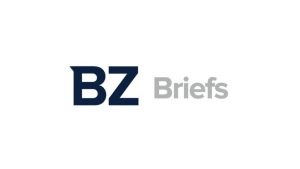Upgrade to paid
On Bloomberg Radio on Friday, Renaissance Macro’s Neil Dutta addressed the shock to GDP that economists have been estimating as a result of the announced tariffs. He too cautioned: “These calculations understate the hit to some extent, because you’re just looking at direct costs. You’re not including, ‘What are the ramifications to corporate confidence? Household confidence?’ The spillover and knock-on effects. I think that’s why I think it can be even worse.”
In terms of modeling how the ongoing trade war will unfold, Dutta added: “We’re all just guessing at this point.”
Oaktree Capital’s Howard Marks, also speaking to Bloomberg on Friday, said: “The world economy and the world order beyond the economy — meaning geopolitics and international relationships — has been shook up like a snow globe by the events of the last days, and nobody knows what it’s going to look like.”
“Today, whatever your forecast may be, you have to say the probability that I’m right is lower than ever,” Marks added. “Because the probability that we know what the future is going to look like is lower than ever.”
While uncertainty and market volatility may be elevated in the near term, experts generally agree that stocks continue to be attractive for long-term investors. It’s just that the near future has become very difficult to predict.
It’s times like these where the best move is to stick to your financial plan, which hopefully takes into consideration periods of high volatility and uncertainty.
If there’s any good news, the first quarter just ended. This means we’ll soon be in earnings season, when companies will give more color on what they see and where they expect things to head.
This could be productive, because so far we haven’t heard much about how tariffs may impact earnings. Here’s what RBC’s Lori Calvasina had to say in her research note on Wednesday:
We’ve been reading earnings call and conference transcripts closely since November across market capitalizations, sectors, and industries and feel fairly confident in saying that U.S. public companies have been very reluctant to discuss tariff impacts (outside of China) until specific details have been provided by the administration, and even then, many still have not given sell-side analysts a lot of specifics to start factoring into their models. The incremental information provided Wednesday (we hope) will enable sell-side analysts to push companies a bit harder to get the conversation going about these policies. This is important, because for U.S. equities to put in a durable bottom, EPS forecasts need to be adjusted which in turn will give investors confidence to assess valuations and make decisions about when opportunity has been unlocked in certain corners of the U.S. equity market.
“Like most analysts and strategists, we’ll be digesting the implications of the newly announced reciprocal tariffs in the coming days,” Calvasina wrote.
All eyes and ears will be on Corporate America in the coming weeks as earnings season picks up.
Will we get more clarity? Or will we learn they have no clue where things are headed either?
As always, keep your stock market seat belts fastened. Investing in the stock market is an unpleasant process.
I was on The Long Term Investor podcast with Plancorp CIO Peter Lazaroff. We talked about TKer’s 10 Truths About The Stock Market and how investors can use them to make sense about markets today. Listen on Apple Podcasts, Spotify, YouTube, and beyond!
There were several notable data points and macroeconomic developments since our last review:
👍 The labor market continues to add jobs. According to the BLS’s Employment Situation report released Friday, U.S. employers added 228,000 jobs in March The report reflected the 51st straight month of gains, reaffirming an economy with growing demand for labor.
The unemployment rate — that is, the number of workers who identify as unemployed as a percentage of the civilian labor force — ticked up to 4.2% during the month. While it continues to hover near 50-year lows, the metric is near its highest level since November 2021.
(Source: BLS via FRED)
While the major metrics continue to reflect job growth and low unemployment, the labor market isn’t as hot as it used to be.
For more on the labor market, read: The labor market is cooling 💼 and 9 once-hot economic charts that cooled 📉
💸 Wage growth ticks higher. Average hourly earnings rose by 0.3% month-over-month in March, up from the 0.2% pace in February. On a year-over-year basis, this metric is up 3.8%.
(Source: BLS via FRED)
For more on why policymakers are watching wage growth, read: Revisiting the key chart to watch amid the Fed’s war on inflation 📈
💼 Job openings fall. According to the BLS’s Job Openings and Labor Turnover Survey, employers had 7.57 million job openings in February, down from 8.76 million in January.
(Source: BLS via FRED)
During the period, there were 7.05 million unemployed people — meaning there were 1.07 job openings per unemployed person. This continues to be one of the more obvious signs of excess demand for labor. However, this metric has returned to prepandemic levels.
(Source: BLS via FRED)
For more on job openings, read: Were there really twice as many job openings as unemployed people? 🤨 and Revisiting the key chart to watch amid the Fed’s war on inflation 📈
👍 Layoffs remain depressed, hiring remains firm. Employers laid off 1.79 million people in February. While challenging for all those affected, this figure represents just 1.1% of total employment. This metric remains at prepandemic levels.
(Source: BLS via FRED)
For more on layoffs, read: Every macro layoffs discussion should start with this key metric 📊
Hiring activity continues to be much higher than layoff activity. During the month, employers hired 5.4 million people.
(Source: BLS via FRED)
That said, the hiring rate — the number of hires as a percentage of the employed workforce — has been trending lower, which could be a sign of trouble to come in the labor market.
(Source: BLS via FRED)
For more on why this metric matters, read: The hiring situation 🧩
🤔 People are quitting less. In February, 3.2 million workers quit their jobs. This represents 2% of the workforce. While the rate is above recent lows, it continues to trend below prepandemic levels.
(Source: BLS via FRED)
A low quits rate could mean a number of things: more people are satisfied with their job; workers have fewer outside job opportunities; wage growth is cooling; productivity will improve as fewer people are entering new unfamiliar roles.
For more, read: Promising signs for productivity ⚙️
📈 Job switchers still get better pay. According to ADP, which tracks private payrolls and employs a different methodology than the BLS, annual pay growth in March for people who changed jobs was up 6.5% from a year ago. For those who stayed at their job, pay growth was 4.6%.
(Source: ADP)
For more on why policymakers are watching wage growth, read: Revisiting the key chart to watch amid the Fed’s war on inflation 📈
💼 Unemployment claims tick lower. Initial claims for unemployment benefits declined to 219,000 during the week ending March 29, down from 225,000 the week prior. This metric continues to be at levels historically associated with economic growth.
(Source: DoL via FRED)
For more context, read: A note about federal layoffs 🏛️ and The labor market is cooling 💼
💳 Card spending data is holding up. From JPMorgan: “As of 28 Mar 2025, our Chase Consumer Card spending data (unadjusted) was 1.5% above the same day last year. Based on the Chase Consumer Card data through 28 Mar 2025, our estimate of the US Census March control measure of retail sales m/m is 0.41%.”
(Source: JPMorgan)
From BofA: “Total card spending per HH was up 0.1% y/y in the week ending Mar 29, according to BAC aggregated credit & debit card data. The slowdown relative to last week was likely due to unfavorable base effects from Good Friday timing (3/29/24 vs 4/18/25). Total card spending growth in the DC area remains weaker than the rest of the country, likely due to the impact of DOGE cuts.”
(Source: BofA)
For more on the consumer, read: Americans have money, and they’re spending it 🛍️
⛽️ Gas prices tick higher. From AAA: “Gas prices made a bigger jump this past week, with the national average for a gallon of regular going up by more than 10 cents to $3.26. Several factors are driving the increase, including refinery maintenance and summer-blend gasoline switch. The last time the national average reached $3.26 was back in September, consistent with seasonal shifts, but current prices remain below what they were this time last year.”
(Source: AAA)
For more on energy prices, read: Higher oil prices meant something different in the past 🛢️
🏠 Mortgage rates tick lower. According to Freddie Mac, the average 30-year fixed-rate mortgage declined to 6.64% from 6.65% last week. From Freddie Mac: “Over the last month, the 30-year fixed-rate has settled in, making only slight moves in either direction. This stability is reassuring, and borrowers have responded with purchase application demand rising to the highest growth rate since late last year.”
(Source: Freddie Mac)
There are 147.4 million housing units in the U.S., of which 86.9 million are owner-occupied and about 34.1 million of which are mortgage-free. Of those carrying mortgage debt, almost all have fixed-rate mortgages, and most of those mortgages have rates that were locked in before rates surged from 2021 lows. All of this is to say: Most homeowners are not particularly sensitive to movements in home prices or mortgage rates.
For more on mortgages and home prices, read: Why home prices and rents are creating all sorts of confusion about inflation 😖
🏢 Offices remain relatively empty. From Kastle Systems: “Peak day office occupancy was 63.1% on Tuesday last week, up two tenths of a point from the previous week. In Austin, the South by Southwest conference and festival led to lower daily occupancy nearly every day. And in Houston, CERAWeek 2025 resulted in significantly lower occupancy last Thursday and Friday before rebounding after the conference, peaking at 71.2% on Tuesday. The 10-city average low was on Friday at 34.3%, down 2.1 points from last week.”
(Source: Kastle)
For more on office occupancy, read: This stat about offices reminds us things are far from normal 🏢
👎 Manufacturing surveys deteriorate. From S&P Global’s March U.S. Manufacturing PMI: “A key concern among manufacturers is the degree to which heightened uncertainty resulting from government policy changes, notably in relation to tariffs, causes customers to cancel or delay spending, and the extent to which costs are rising and supply chains deteriorating in this environment. Tariffs were the most cited cause of factory input costs rising in March, and at a rate not seen since mid-2022 during the pandemic-related supply shock. Supply chains are also suffering to a degree not seen since October 2022 as delivery delays become more widespread.”
(Source: S&P Global)
The ISM Manufacturing PMI also deteriorated, signaling contraction in the industry.
(Source: ISM)
Keep in mind that during times of perceived stress, soft survey data tends to be more exaggerated than actual hard data.
For more on this, read: What businesses do > what businesses say 🙊
🤷 Services surveys are mixed. From S&P Global’s March Services PMI: “March saw a welcome rebound in service sector business activity after a weak start to the year, with employment also returning to growth after a decline seen in February. However, the rate of expansion remains below that seen throughout the second half of last year. Combined with a weak manufacturing reading for March, the survey data point to GDP having risen at an annualized rate of just 1.5% in the first quarter, down sharply from the 2.4% rate seen at the end of last year.”
(Source: S&P Global)
Meanwhile, the ISM Services PMI cooled in March.
(Source: ISM)
🔨 Construction spending ticks higher. Construction spending increased 0.7% to an annual rate of $2.2 trillion in February.
(Source: Census)
🏭 Business investment activity ticks lower. Orders for nondefense capital goods excluding aircraft — a.k.a. core capex or business investment — declined 0.2% to $75.13 billion in February.
(Source: Census via FRED)
Core capex orders are a leading indicator, meaning they foretell economic activity down the road. The growth rate had leveled off a bit, but they’ve perked up in recent months. However, economists caution that this may reflect a pull forward in sales ahead of new tariffs.
For more on core capex, read: A BIG economic question right now 🤔 and 9 once-hot economic charts that cooled 📉
🇺🇸 Most U.S. states are still growing. From the Philly Fed’s January State Coincident Indexes report: “Over the past three months, the indexes increased in 47 states, decreased in one state, and remained stable in two, for a three-month diffusion index of 92. Additionally, in the past month, the indexes increased in 35 states, decreased in nine states, and remained stable in six, for a one-month diffusion index of 52.”
(Source: Philly Fed)
📉 Near-term GDP growth estimates are tracking negative. The Atlanta Fed’s GDPNow model sees real GDP growth declining at a 2.8% rate in Q1. Adjusted for the impact of gold imports and exports, they see GDP falling at a 0.8% rate.
(Source: Atlanta Fed)
For more on the economy, read: 9 once-hot economic charts that cooled 📉
🚨 The tariffs announced by President Trump as they stand threaten to upend global trade with significant implications for the U.S. economy, corporate earnings, and the stock market. Until we get some more clarity, here’s where things stand:
Earnings look bullish: The long-term outlook for the stock market remains favorable, bolstered by expectations for years of earnings growth. And earnings are the most important driver of stock prices.
Demand is positive: Demand for goods and services remains positive, supported by healthy consumer and business balance sheets. Job creation, while cooling, also remains positive, and the Federal Reserve — having resolved the inflation crisis — has shifted its focus toward supporting the labor market.
But growth is cooling: While the economy remains healthy, growth has normalized from much hotter levels earlier in the cycle. The economy is less “coiled” these days as major tailwinds like excess job openings have faded. It has become harder to argue that growth is destiny.
Actions speak louder than words: We are in an odd period given that the hard economic data has decoupled from the soft sentiment-oriented data. Consumer and business sentiment has been relatively poor, even as tangible consumer and business activity continue to grow and trend at record levels. From an investor’s perspective, what matters is that the hard economic data continues to hold up.
Stocks are not the economy: Analysts expect the U.S. stock market could outperform the U.S. economy, thanks largely due to positive operating leverage. Since the pandemic, companies have adjusted their cost structures aggressively. This has come with strategic layoffs and investment in new equipment, including hardware powered by AI. These moves are resulting in positive operating leverage, which means a modest amount of sales growth — in the cooling economy — is translating to robust earnings growth.
Mind the ever-present risks: Of course, this does not mean we should get complacent. There will always be risks to worry about — such as U.S. political uncertainty, geopolitical turmoil, energy price volatility, cyber attacks, etc. There are also the dreaded unknowns. Any of these risks can flare up and spark short-term volatility in the markets.
Investing is never a smooth ride: There’s also the harsh reality that economic recessions and bear markets are developments that all long-term investors should expect to experience as they build wealth in the markets. Always keep your stock market seat belts fastened.
Think long term: For now, there’s no reason to believe there’ll be a challenge that the economy and the markets won’t be able to overcome over time. The long game remains undefeated, and it’s a streak long-term investors can expect to continue.


